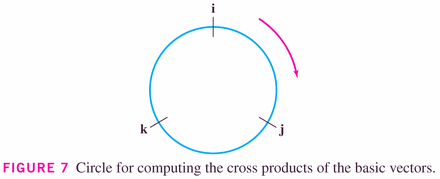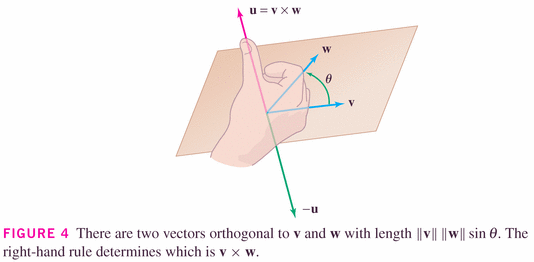- Return of your homework (whoops! sorry, not yet):
- 2
- 22
- 26
- Quiz Opportunity tomorrow will be over section 12.5
- Homework 12.3 is due tomorrow -- that's the last section covered for our last midterm exam on Thursday: it will cover everything up through 12.3 since our last exam.
- The next product we'll find convenient to define is the cross
product, which is a product of two vectors resulting in a third vector,
which juts into the space perpendicular to which the two vectors live.
It is only defined (and useful) in three-space, which makes it somewhat unusual (the dot product exists and is useful in any dimensional space).
The cross product is linear in its components: that is,
This means that we can define it on the unit vectors in three space, and then deduce it using the component-wise definition of a three-vector.

- #5, p. 838
Now: here are the important geometric (rather than simply algebraic) properties of this product:

for the dot-product, it's the cosine; for the cross-product, it's the sine.

The "absolute values" in this case represent determinants, which, for a 2x2 system with first row a, b and second row c, d is given by
. So the computation above works out to
Example:
- #7, p. 838


Examples:
- #15, p. 838
- #33, p. 839
- Torque: #39
- Torque: #41
- A cross-product (and dot product) worksheet
- If we have time, we'll approach this via a worksheet on lines and planes.